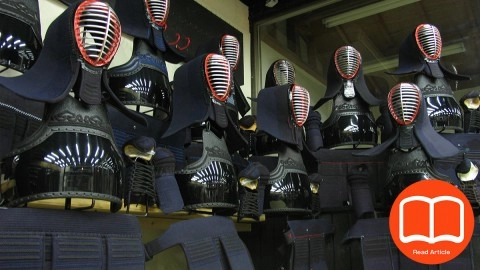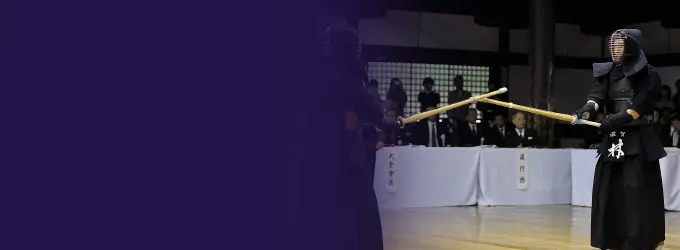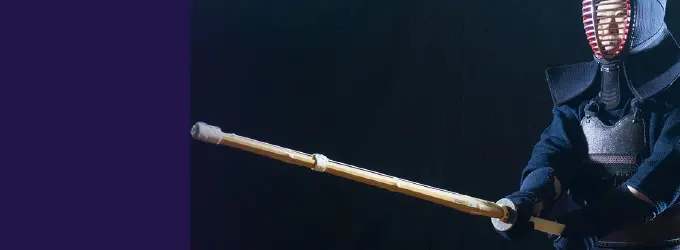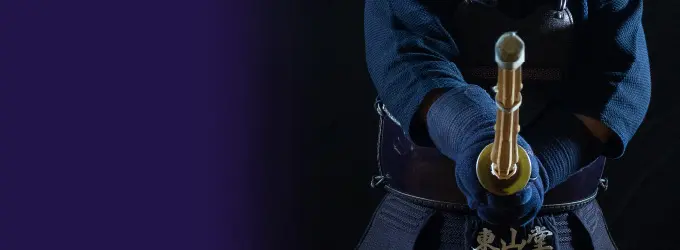Methods of Maintaining and Extending the Life of Equipment
11 30, 2020
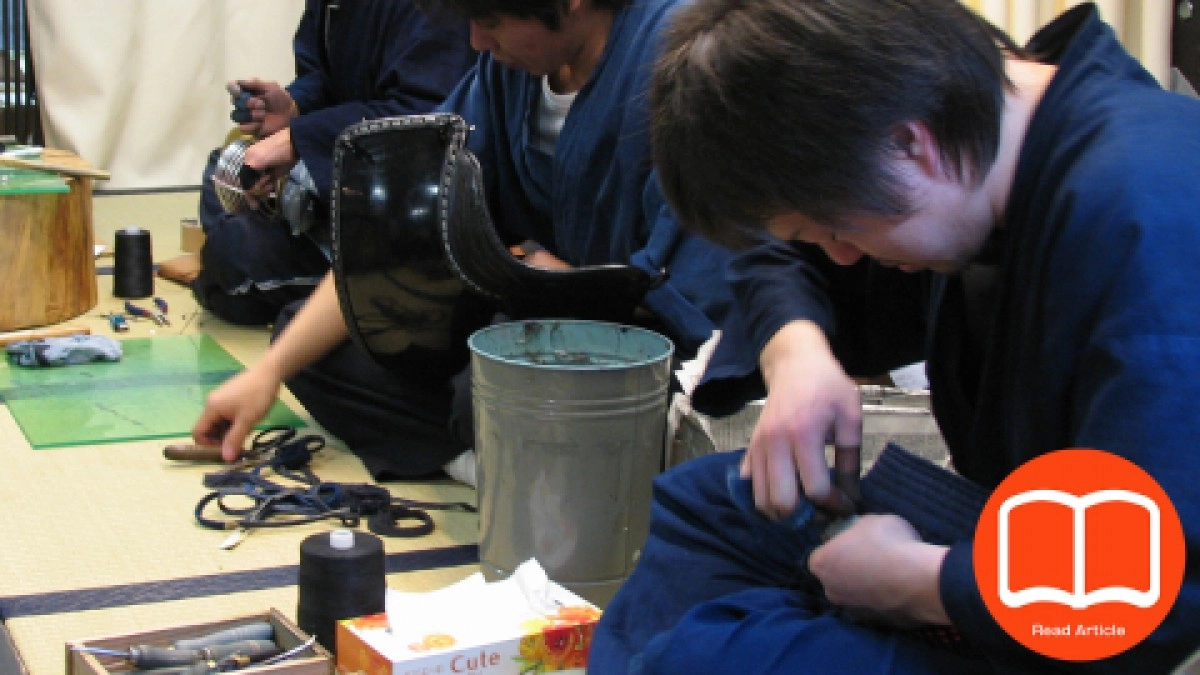
Let's take extra care of our types of equipment and use them for a longe period of time! Kendo equipment heats up and wears out when used. For example, constant practices will wear the wrist protector, putting a hole or tear through it, and the sword will twist if struck with hard force. In order to prevent that, we have to always work on their maintenance. Using the equipment with great care will increase their usage life.
Table of Contents
1.Examine Them Well More Often Before and After Use
Checking the conditions of the equipment is the duty of the user. Using damaged protective gears and sword may not only cause you injuries, but also to your opponent.
Shinai - Bamboo Sword
Swords in kendo are consumables. It’s the equipment that receives most of the impacts, so you should always keep an eye out for any cracks or tear. The climate, humidity, and frequency of the practices impact the condition of the sword. Sometimes a sword may last only for a week, but sometimes it stays good for as long as a month. It’s going to be a little hard for beginners and lower graders to do it, but later on when people reach high school, they occasionally have to dissemble the swords to repair the damaged parts. So it is recommended for them to learn them beforehand from a teacher or senior. Also, just in case the sword cracks in the middle of practice, it is recommended to always prepare 2~3 spare swords. Inspection of the sword is important. The part that receives the most impact quite often gets damaged and if anyone decides to just use it, it could get really dangerous.
You must always check them before and after practices and use a small knife specially made to trim the sword or sand papers to remove the cracked parts of the swords.
Most of the cracks can be handled by trimming them, but if the core of the sword itself is damaged or the cracks have been occurring quite often, please use the sword no longer and use a new one.
Repair the Shinai
Huge cracks could imply that damages are also made on the spots that are not visible. Thus, there is a need to dissemble the sword to inspect them then. A kendo sword is made of 4 sticks assembled together. So it is possible for anyone to just replace the one that is damaged. You could assemble them yourself, but it is recommended to get them assembled and handled at a professional shop. In case you are going to use the knife for trimming the sword, it will be easier to trim it if you put the knife on the sword at a perfectly right angle. Always keep the blade of the knife facing in the same direction when the job is done. Then, you should finish the trimming with a sand paper and rubbing it with an oil-soaked cloth will make the whole thing more effective. Once again, if there is a crack or damage on the core of the sword, it should no longer be used. Please be very careful.
Do - Waist Gear
If your waist gear is contaminated, you could get a warning at the level test. You should always wipe the back and keep it in a place that is cool, breezy, and dry, because the inner part of the gear is always wet with sweat after it is used. If there is any contamination, use a brush to rub and wipe it off and dry it at a place where there is no direct sunlight.
Kote - Wrist Protector
The wrist protector is easily damaged, because people exert force into it to grab the sword tightly. The inner part of the protector is most especially damaged, putting holes through them with frequent practices. The holes get bigger with time, so you should repair them when they are still small. If the holes still get bigger, you could replace the inner leather of it. If the holes are small, you could buy the leather and stitch them yourself, but, to get the job done well, it is recommended to visit the shop. Right after they are used, stretch the leather part on the inside a little and, just like the waist gear, dry them in a place shady place. If you get lazy of it, the part that soaked the most sweat will start to smell and the leather will wear out more quickly.
Tare - The Straps on the Head and Waist Gears
As for the strap on the head gear, the part that attaches to the metal part of the gear wears out easily. When they are worn, people tend to tie them hard and tight. In the process of that, the strap receives friction from the metal parts. Repetition of this process will wear out the strap and eventually tear. You should always keep an eye on their condition, because they sometimes break during matches. Also, as for the straps on the waist gear, people tie them hard on their shoulders, so they could break easily as well. The straps of different parts of the gears could be bought separately, so buying a few extra just in case would be a good idea.
2.Managing the Odor

Kendo equipment could smell really bad when used. That is because the protective gears could absorb sweat and that could in turn cause bacterial reproduction. In fact, many people, who have practiced kendo for a long time, have never washed their protective gears. You yourself could be used to the smell, but this odor could be giving uncomfortable experiences to the people around you.
Dry Them and Keep the Daily Care
It is not necessary to wash the gears every time they are used. That is all the more the reason why you should dry them well after use. You should not make the mistake in leaving anything in the pocket, because that will make it impossible to dry up and cause molds to grow on them. Drying them well will prevent the odor. The wrist protector is the hardest equipment to dry well, so you should leave them with the inside facing out. Leaving deodorizers with the gears could also be very effective.
Gear Washing Method and Duration
The most basic and simple way of washing them is putting them inside a lukewarm water with detergent for a little while and then taking them out for some brushing. When you put the gears in, make sure to have the metal part face up and avoid the leather part from submerging completely. After about an hour, rub the contaminated spots and wash them for about 3 times with water. After removing the water out of the gears for a while, use a towel to tap off more water and leave them on a shady place to naturally dry. You could put the gears and dry them in the dryer as long as the metal part is faced upward, but that is up to you and you are to be held responsible. If the weather is good, the gears could dry up throughout the day, but leaving them for about 2 days is recommended. So it would be good if you could wash them on your off days. Also, make sure you put some cream on the leather parts.
Special Cleaning In Case the Odor Doesn’t Come Off
If the odor doesn’t come off, you could get them to the laundry store for special cleaning. Get them to gear stores or professional laundry stores. Getting them cleaned like that will remove the odor from the gears and they will become clean. For a refreshing condition, it is recommended to get them cleaned like so once every few years.
Do Not Wash Them Before Any Match
Getting the gears washed right before any match or level test could change the texture and touch, so you might not be able to put as much power through it as before. Please, keep that in mind.
Maintenance of Dyed Gears
Gears for sports like kendo receive a lot of impacts, so they could lose their colors quite quickly. Thus, there is a need to check them periodically to prevent them from losing their colors. It’s been customarily recommended to wear gears that are still dark in color for any match or level test. Regardless, wearing gears that have lost their colors do not look good.
3.Maintenance of Dyed Gear

Gears for sports like kendo receive a lot of impacts, so they could lose their colors quite quickly. Thus, there is a need to check them periodically to prevent them from losing their colors. It’s been customarily recommended to wear gears that are still dark in color for any match or level test. Regardless, wearing gears that have lost their colors do not look good.
What Kind of Color Coating?
The gears are color coated with this color extracted from a plant. This method of coating is very ancient and is said to have begun in 3,000 B.C. This method was passed on to Japan in the Asuka Period. This color is called indigo and by combining this with the hemp textile a clear navy is derived. However, this is considered a very effort requiring a method of dyeing, because indigo hardly melts in water. If a color doesn’t melt and the components of the color and the textile don’t fuse, it will not become a dye. That is why deriving that navy color we want requires melting the indigo first in the water. The navy dye in Japan is made by putting the ingredients, ash water, and bran into a big bottle and fermenting it for about a week to make it dissolvable. Then, that liquid is made to soak in the textile and dried again to return it to the indigo it was to coat the color. Making the dye itself is a week-long process. That is a lot of work. Furthermore, this navy dye not only makes the gears look darker in color, but also enhances their performance. Gears that are dyed like this are known to be better at keeping the odor, bacteria, and insects off. But how do we prevent this dye from coming off? The most effective thing that prevents this dye from coming off is citric acid. The navy dye melts easily on anything alkaline, so the citric acid will be a good material to prevent the alkaline from taking away the color. If you have no idea where to get them from or find it hard to get some on your own, you could use the normal edible citric acid as a substitute. You could put the gears in the water with acid that is diluted by 5 times and leave them for a night. Then, use some neutral detergent to hand wash them. Doing this process periodically will make the prevention most effective. But be very careful, because using alkaline detergent to wash them will take away the color.
What If the Color Still Fades?
If the color still fades and makes the gears look bad, you could get the gears to the store and get them dyed again. However, re-dyeing the gears will take some time and money. If you don’t want to spend too much money on it, you could get this dye specially made for the job and re-dye them. To do the job, prepare a big and a small brush. Using a rice paddle or a toothbrush would also do. Get this special liquid that is sold commercially and dilute it to the right concentration. Then, use the brush to gently apply it to the gears. As for the small brush, use it for the spots that require retail coloring and apply it thoroughly. Finally, dry the gears for about a day on a place that doesn’t get direct sunlight. But re-dyeing the gears without handling the deterioration and contamination caused by sweat will make the coloring look clustered and uneven.
4.Conclusion

The life of equipment, especially kendo equipment, depends on how much the user has taken care of them. The equipment gets damaged faster if no care is taken during the rainy season when the humidity is high or during summer when the temperature is high. That is why it would be nice to take them out and get your hands on them once in a while, even if you don’t need to use them for a long time. Although you will naturally get attached to the protection gears, because they protect your body, as long as you are going to practice kendo, those protection gears are your inseparable partners.
As mentioned above, it is not an exaggeration to say that the life of that equipment lies heavily on how the user takes care of them. These little efforts will definitely greatly influence the life of the equipment. After all, you paid for that equipment. So it’s natural wanting to use them for a long time. In order to do so, sustaining daily maintenance and management is important. But, once again, if they have been damaged to the extent that you can’t do anything about it, please get them to the professionals.
